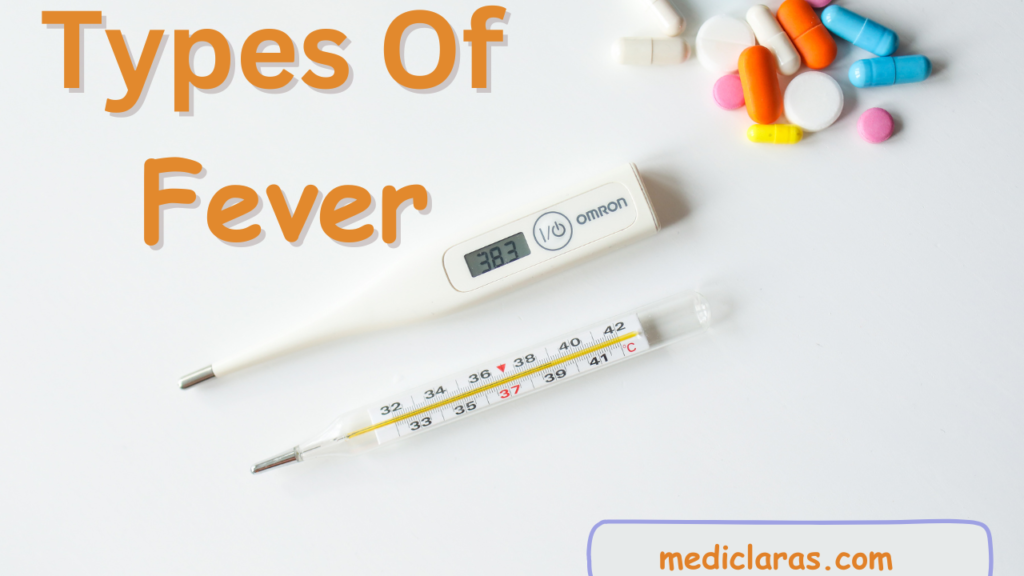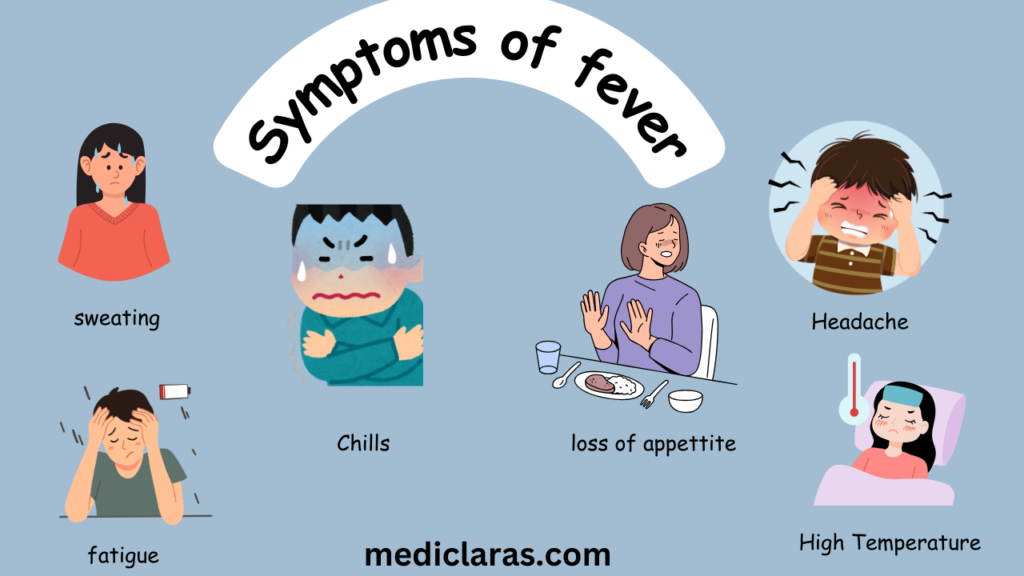A Comprehensive Guide to Fever And Its Types
It is a general impression that diseases cause fever ,yet fever tends to be one of the most obvious symptoms indicating that a body’s immune system is working hard to combat an infection or another medical problem. Although fevers are quite commonly thought of as merely increased body temperature, there are various subsets of fever based on further characteristics. By recognizing these distinctions you can manage your health more effectively and know when to call a doctor. Here a comprehensive guide to fever and its types.
What is fever?
Fever also called pyrexia is an increase in body temperature above the normal range of 98.6°F. It occurs due to increase in the set point of the body’s internal thermoregulation system. The most common causes include infections or inflammation. Fever places the immune system on a higher alert and helps fight infections. But when the fever lasts more than two weeks and is very high it may be a sign of a more serious disease process requiring medical assistance.
Types of Fever

On the basis of duration
● Acute fever
This type of fever is short lived ,that lasts for fewer than 7 days .It is mostly associated with viral or maternity infections like influenza, the common cold, or dengue.
● Sub acute fever
This kind of fever lasts for 7 to 14 days and it is usually associated with diseases such as Typhoid fever and some viral infections which take a long time to clear.
● Chronic fever
This particular form includes fever that lasts for more than 14 days; it may signify grave conditions, such as tuberculosis autoimmune disorders or different varieties of cancers.
Types on the basis of Severity
● Low grade fever
This fever has temperature readings between 99°F and 100.4°F. For example in mild infections or early phases of an illness.
● Moderate fever
This fever has temperature ranges between 100.4 °F And 104°F. It is observed in viral or bacterial infections such as strep throat or pneumonia.
● High fever
The fever has temperature ranges above 104°F. For example it is your infections like Malaria or meningitis. Such fever can be dangerous and needs immediate medical attention.
● Hyperpyrexia
This is a very high temperature of over 106°F occurs in a medical emergency. For example it occurs in severe infection, heat stroke or an injury to the Brain may all produce hyperpyrexia.
Types on the basis of pattern
● Continuous fever
In this type the temperature remains above normal fluctuating by less than 1°C throughout the day. For example Typhoid fever.
● Intermittent fever
Regular episodes of fever spikes followed by drops to normal or below normal one classic example is Malaria.
● Remittent fever
In this type the temperature varies by more than 1°C but does not fully return to normal. For example in infective endocarditis.
● Relapsing fever
This type has features of fever episodes that are interspersed with days of normal temperature. This fever can be seen in diseases like Borelli infections.
● Septic fever
This type of fever has a very wide variation in temperature, usually with cheese and sweats. It is common in the immunocompromised state or sepsis.
Types on the Basis of Etiologies
● Infectious fever
The fever that results from infection with bacteria, viruses, fungi and parasites for example Dengue , COVID-19 and tuberculosis.
● Non infectious fever
The fever that results from inflammation, autoimmune diseases like lupus or in cases of malignancy.
● Drug induced fever
This type of fever results from side effects or allergic reactions of certain medications.
● Neurogenic fever
As we know hypothalamus controls the thermo regulatory mechanism of the body. When any injury or surgery of the hypothalamus occurs the fever results in what is referred to as neurogenic fever
. ● Factitious Fever
This is willful ,stimulated or self induced fever .It is generally observed in psych medical patients suffering from Munchausen syndrome.
Symptoms Generally Associated with fever:
Common indications to diagnose the cause and severity of a fever are:
● A raised body temperature
● Chills or shivering
● Perspiration
● Physical weakness
● General body pain
● Decreased urination
● Dry mouth
● Headache
● Lack of desire to eat
● Facial flushing
● Increased heartbeat
● Mood changes

Effective Ways to manage Fever at home:
Here are some ways which we can follow at home to relieve the distress from fever and help in recovery .
1.Rest
Let the body rest as this will help our immune system to work efficiently.
2.Hydrate
As sweating in fever may cause dehydration so drink plenty of fluids to avoid dehydration.
3.Sponging
Sponging with lukewarm water can help to lower the body temperature.
4. Over the counter medications
With fever and discomfort acetaminophen or ibuprofen may help. Follow the instructions for dosage are printed on the drug label. Consult with your physician beforehand if you are pregnant, have pre-existing conditions or are treating small children.
5.Herbal Remedies
● Fenugreek Water: According to traditional practices, fenugreek (methii)seeds are considered helpful for reducing fever due to its antiviral or anti-inflammatory effects.
● Tulsi Tea : Tulsi can also help in reducing fever because it has antibacterial and germicidal properties. Tulsi leaves are boiled in water and drink the infusion.
6.Food
As poor appetite may be a part of your illness, keeping up with nutrition is advised for a speedy recovery.
● Light meals: Easily digestible items such as Broths, soups and crackers are suggested in fever
● Avoid heavy meals: Stay away from excessive rich food since they might burden the system.
When to call the doctor
Fever can be handled at home in most cases, the doctor must be consulted if the fever lasts beyond three days;
if the fever reaches above 103° F in adults, or 102°F in children; Some additional symptoms like severe headache, a rash, difficulty in breathing, a stiff neck, vomiting that won’t go away.
Remember that home remedies serve only as symptomatic relief and are no substitute for medical consultation when fever has been raised .Do call your healthcare provider in case of any issues related to fever.



